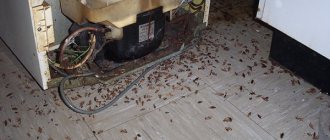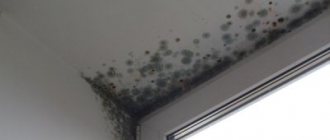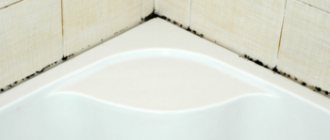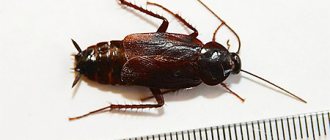One of the most common problems with indoor plants is mold, which appears on the surface of the soil due to improper care, high humidity or spores from the air. The fungus has the ability to quickly spread and infect unprotected areas of the plant. Find out how to stop the attack and prevent the need for complete soil replacement.
White mold (Mucor)
Mold fungi grow and multiply on the surface of the soil, food products, and organic waste.
Some Mucor species are capable of causing human disease. And some species are used to produce antibiotics.
White mold on the soil in a pot does not bring any benefit; on the contrary, it can be dangerous. In appearance, it resembles white fluff, gradually filling the soil surface. To the touch, the structure is soft, easily crushed with your fingers.
It negatively affects the well-being of people and plants. Mucor will not cause any significant harm to most healthy people. But during sporulation, microscopic fungal spores entering the respiratory tract can cause an allergic reaction.
It is not so much the mold itself that harms a house plant, but the conditions under which it develops. It appeared because the rules for keeping flowers were violated.
Favorable conditions for spore germination, such as high humidity at low temperatures, heavy soils, negatively affect the development of crops. Therefore, the appearance of Mucor is not the cause of the depressed state of the plant, but a result that signals a deterioration in conditions.
Methods of disposal
In order to eliminate fungus in flower pots, the following measures must be taken:
- Replace the top layer of soil, approximately 2 - 3 cm deep, with fresh soil of a lighter structure.
- Reduce the number of waterings.
- Prevent water stagnation.
- Provide drainage.
- Loosening will saturate the soil with oxygen.
- Antifungal drugs - fungicides. For medicinal as well as preventive purposes, the ground is periodically watered with a solution of Fitosporin. It is absolutely safe, as it is a remedy for mold of biological origin.
Why is mold dangerous for plants?
It is necessary to combat mold that appears on the ground immediately after detecting the first signs of damage. This fungus is very dangerous for plants and can lead to the following consequences:
- mold disrupts the process of plants absorbing nutrients;
- problems arise with the circulation of oxygen in the soil and, as a result, the roots of the plant suffer;
- fungus on the surface of the earth makes it difficult for moisture to evaporate and because of this, rotting of the root system begins;
- in advanced cases, the fungus can even lead to the complete death of the plant.
Mold on plants.
Soluble salts - efflorescence
Any water used for irrigation contains soluble salts. Their concentration varies: hard or well water contains a large amount of salts. The smallest amount of elements contains rain, melt, and so-called “soft” water. Depending on the microelements present, the color of the efflorescence will differ: calcium salts will give a white tint, and if there is an excess of iron, the soil on top will be yellow or brown.
This phenomenon most often affects heavy soils with poor drainage and frequent surface watering. When water does not completely wet the earthen ball, soluble salts do not reach the roots well and linger on the surface.
Overly fertilized soil can also cause efflorescence. If microelements do not have time to be absorbed by the flower, they begin to come to the surface.
How to deal with salt deposits
In order to get rid of plaque, eliminate the cause of its appearance:
- Carefully replace the top layer of soil.
- If possible, use soft water: rain or tap water, well settled.
- Reduce the frequency of watering by increasing the volume of liquid so that the earthen ball is completely saturated.
- Ensure good drainage and clear clogged drainage holes.
- Regularly loosen the top layer of soil.
How to distinguish mold from efflorescence
The fungus protrudes a few millimeters above the soil surface, its structure is soft, delicate, and can be easily rubbed between the fingers.
Efflorescence resembles a thin coating that is difficult to separate from the soil and feels rough to the touch.
How to soften water for watering flowers
The easiest way is to collect rainwater. But this option is not suitable for industrial areas, since raindrops will collect dust and chemical elements in the air.
- Use well-settled water. For watering, take the top layer, excluding shaking.
- Filtered water. There are special filters for hard water that soften it by retaining calcium salts.
- Melt water. Take regular tap water out into the cold or place it in the freezer. Liquid without salts freezes earlier; complete freezing should not be allowed. Then the unfrozen water is drained and the ice is defrosted. The water prepared in this way will be soft and biologically active – “alive”.
- It is good to use aquarium water for watering. But provided that no drugs or other additives were added to it.
How to get rid of mold in flower pots
The fight against a dangerous fungus can be carried out in different ways, each of which is effective in its own way.
Mechanical method of fighting
The mechanical method involves removing the top contaminated layer of soil and adding new clean soil in its place. If the fungal infection is very strong, then the easiest way is to transplant the plant into a new pot using a clean substrate.
After replanting, it is very important to regularly loosen the soil and water the plant properly. A new portion of water must be added to the pot only after the top layer of soil has completely dried.
Use of beneficial bacteria and bactericidal components
Adding special components that have bactericidal properties to the soil will help get rid of the fungus. Gardeners consider the most effective to use sphagnum moss and charcoal .
Also in the fight against mold, the drug Fitosporin . It contains special beneficial bacteria that prevent the appearance of rot and fungi.
Using citric acid against mold
A fairly popular method of combating mold is the use of citric acid. To do this, when watering plants, add a small amount of lemon juice or citric acid to the water. This solution has a beneficial effect on the plant and is detrimental to the fungus.
Folk methods of dealing with various raids
Folk remedies involve the use of safe methods:
- Replanting the plant or replacing the top layer of soil.
- Using a weak solution of potassium permanganate. This method is effective only against mold, since potassium permanganate has fungicidal (antifungal) properties.
All types of molds, efflorescence, moss, appear on dense, poorly drained soils. Improving the soil structure, loosening, and regulated watering will help prevent this problem.
Preventative measures to prevent the appearance of mold
The appearance of mold in pots where houseplants are grown can be considered an emergency and a signal that all measures must be taken to prevent the fungus from spreading further. To prevent this from happening, it is better to think about this in advance. For example:
- From time to time, loosen the top ball of soil so that it breathes and there is no stagnation of moisture and air.
- When planting plants, take care of a normal drainage system.
- Grow indoor plants in special pots equipped with holes in the bottom.
- Fertilize with wood ash or activated carbon. Don't forget about other actions that can reduce the likelihood of mold growing in flower pots.
For example, you can treat the soil with potassium permanganate at least once a month. In this case, you should prepare a weak solution that will not harm the plants.
Garlic, which needs to be cut into several pieces and placed next to the stem, is considered to be a fairly effective remedy against fungus. This is done before watering, and when the top ball of soil dries, the garlic is removed. It can be used in a rotation of once a week. If mold appears, apply garlic every two days.
Transplanting a plant
The most effective way to combat infection is to replant the crop. This procedure helps not only get rid of mold, but also eliminate other problems, as well as provide the plant with nutrients, because it has managed to pull out all the minerals from the old soil.
See also The earth is covered with mold: methods of control
The substrate for transplantation must be selected taking into account all the rules and requirements for a particular flower. It is important to ensure good drainage. To do this, charcoal, broken polystyrene foam or small pebbles are placed at the very bottom of the pots.
After removing the contaminated soil composition, it is recommended to wash and disinfect the pot. The permissible moisture level should also be clarified in advance for a specific crop and not exceed it.
Tips for preventing soil contamination by fungus
Fungus-infected soil is a rather serious problem, which is much easier to prevent than to solve.
Soil for plants
There are several recommendations on what to do to prevent the soil from becoming moldy:
- purchase soil for indoor plants only at specialized retail outlets;
- regardless of whether the soil was purchased, collected in the garden or in the forest, it is advisable to treat it before planting the plants (you can calcinate the substrate or use a solution of potassium permanganate);
- used pots must be disinfected before filling with soil and replanting;
- be sure to make a drainage layer;
- Regularly loosen the soil in the pot to ensure access to oxygen.
From time to time, you need to add a little crushed charcoal or activated carbon to the soil.











